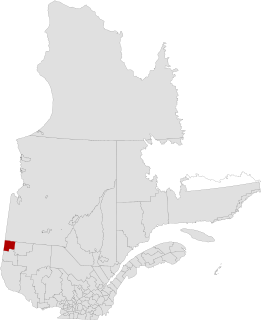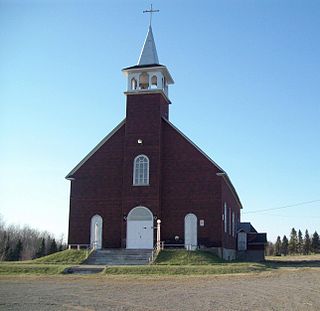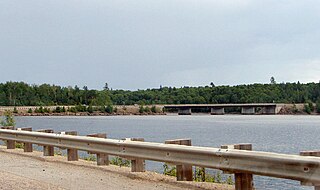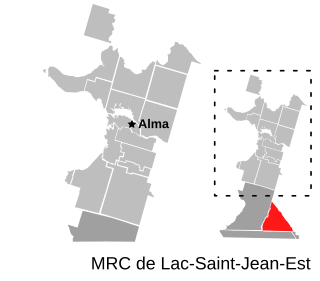| Rivière-Ojima | |
|---|---|
| Unorganized territory | |
 Location within Abitibi-Ouest RCM. | |
| Coordinates: 48°50′N78°42′W / 48.833°N 78.700°W Coordinates: 48°50′N78°42′W / 48.833°N 78.700°W [1] | |
| Country | |
| Province | |
| Region | Abitibi-Témiscamingue |
| RCM | Abitibi-Ouest |
| Constituted | January 1, 1986 |
| Government [2] | |
| • Federal riding | Abitibi—Témiscamingue |
| • Prov. riding | Abitibi-Ouest |
| Area [2] [3] | |
| • Total | 356.20 km2 (137.53 sq mi) |
| • Land | 356.04 km2 (137.47 sq mi) |
| Population (2011) [3] | |
| • Total | 104 |
| • Density | 0.3/km2 (0.8/sq mi) |
| • Pop 2006-2011 | |
| • Dwellings | 51 |
| Time zone | EST (UTC−5) |
| • Summer (DST) | EDT (UTC−4) |
| Highways | No major routes |
Rivière-Ojima is an unorganized territory in the Abitibi-Témiscamingue region of Quebec, Canada. It consists of two non-contiguous areas in the Abitibi-Ouest Regional County Municipality, separated by the municipality of Authier-Nord. The communities of Languedoc ( 48°48′26″N78°41′48″W / 48.80722°N 78.69667°W ) and Saint-Eugène-de-Chazel ( 48°57′06″N78°58′38″W / 48.95167°N 78.97722°W ) are located within its boundaries.
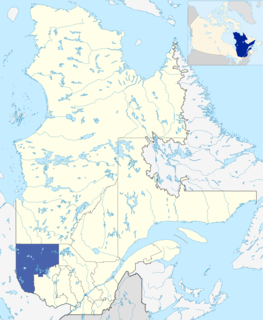
Abitibi-Témiscamingue is an administrative region located in western Québec, Canada, along the border with Ontario. It became part of the province in 1898. It has a land area of 57,674.26 km2. The region is divided into five regional county municipalities and 79 municipalities. Its economy continues to be dominated by resource extraction industries. These include logging, mining all along the rich geologic Cadillac Fault between Val-d'Or and Rouyn-Noranda, as well as agriculture.

Quebec is one of the thirteen provinces and territories of Canada. It is bordered to the west by the province of Ontario and the bodies of water James Bay and Hudson Bay; to the north by Hudson Strait and Ungava Bay; to the east by the Gulf of Saint Lawrence and the province of Newfoundland and Labrador; and to the south by the province of New Brunswick and the U.S. states of Maine, New Hampshire, Vermont, and New York. It also shares maritime borders with Nunavut, Prince Edward Island, and Nova Scotia. Quebec is Canada's largest province by area and its second-largest administrative division; only the territory of Nunavut is larger. It is historically and politically considered to be part of Central Canada.
Geographic contiguity is the characteristic in geography of political or geographical land divisions, as a group, not being interrupted by other land or water. Such divisions are referred to as being contiguous. In the United States, for example, the "48 contiguous states" excludes Hawaii and Alaska, which do not share borders with other U.S. states.
Contents
Founded in 1949, Languedoc is the youngest rural population centre of the Abitibi and named after a region in southern France. The Parish of Saint-Etienne-de-Languedoc was formed in 1952. [4]
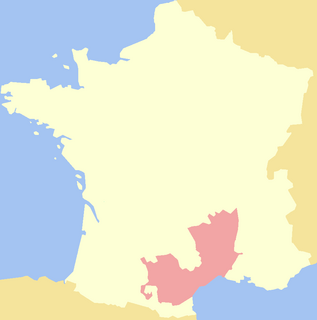
Languedoc is a former province of France. Its territory is now contained in the modern-day region of Occitanie in the south of France. Its capital city was Toulouse. It had an area of approximately 27,376 square kilometers.




